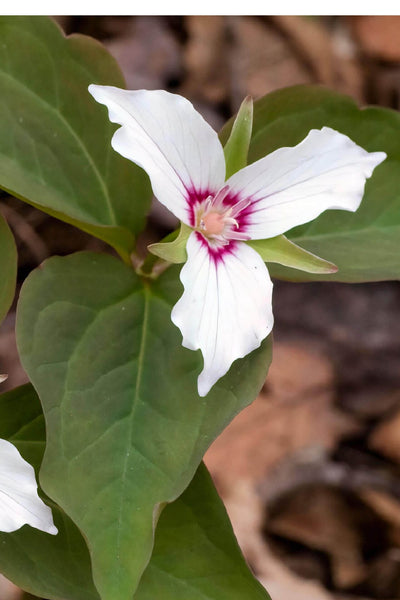The Enchanting Beauty of Painted Trillium
Painted Trillium received reverence from indigenous communities and early settlers because of its decorative beauty and powerful healing properties. The roots and leaves of this plant were essential in traditional Native American medicine where they created mixtures to heal wounds while helping during childbirth and reducing inflammation. The plant's capacity to prosper within the filtered sunlight of untouched forests represented its strength and natural purity.
Upon reaching the New World European botanists found themselves enchanted by its beauty and recorded its presence without delay. During the 18th century plant collectors enthusiastically sought to grow this specimen in their shaded gardens and botanical collections. The plant became more desirable because it rarely appeared in wild settings while its connection to untouched forests enhanced its enigmatic appeal.
Painted Trillium Medical History
Before modern medical science developed, ancient herbalists understood the healing properties this species offered. The rhizomes of this plant were used by Indigenous healers to make a soothing tea that offered relief for respiratory problems and digestive discomfort while also treating snake bites. Practitioners of women’s health relied on this plant for its ability to alleviate labor pains and maintain regular menstrual cycles.
Pioneers implemented these traditional techniques by drying and grinding roots into poultices for infection treatment and using crushed leaves to protect wounds from irritation. Modern medical practices have mostly substituted these herbal treatments but the plant's historical medical importance shows that its worth extends past its visual appeal.
A Natural Treasure in the Landscape
Gardeners value this woodland marvel for its unique ability to enhance natural landscapes with an enchanting beauty that cannot be easily duplicated. Woodland gardeners who want to bring the tranquil ambiance of a shaded forest floor should choose this plant for woodland gardens and native plant sanctuaries.
Painted Trillium thrives in rich acidic soil and cool moist conditions which makes it perfect for areas beneath deciduous tree canopies. This plant flourishes in dappled sunlight and commonly grows together with ferns and mosses as well as other shade-tolerant perennials. Horticulturists frequently choose this plant as a dramatic element in shaded rock gardens due to its distinctive color pattern which stands out against the backdrop of deep green leaves.
Under appropriate conditions this species establishes itself well which makes it an outstanding option for natural plantings. Under proper care, this plant gradually extends its reach and produces an enchanting springtime display that naturally integrates with the adjacent forest environment.
Painted Trillium A Masterpiece of Nature’s Design
This woodland beauty's appearance surpasses most other plants in terms of visual appeal. This plant grows between 12 and 18 inches tall and produces one stunning flower that looks as though it were painted by hand. The flower shows three pristine white petals which feature an artistic base maroon or pinkish streak that captures botanists and nature lovers' attention.

The flower emerges between mid-spring and late spring before transitioning into a bright red seed capsule throughout early summer which continues to captivate observers. The flower displays its refined appearance against the backdrop of the plant's deep green whorled leaves. The plant showcases delicate construction and detailed features that establish it as one of North American forests’ most visually stunning species.
A Sanctuary for Rare Woodland Visitors
While this species possesses remarkable beauty it also fulfills an essential ecological function by drawing rare wildlife to its shaded environment. This wildflower stands out from others because elusive forest pollinators actively seek its pollen and nectar.
Native bumblebees along with other specialized bee species regularly visit this flower due to its subtle scent and rich nectar resources. Some long-tongued fly species that usually remain hidden in cultivated gardens subsist on this plant's flowers.
Painted Trillium forms an interesting partnership with myrmecochorous ants that help distribute its seeds by relocating them to subterranean nests. The plant survives in undisturbed woodlands due to a symbiotic partnership which allows it to grow without competition from other vegetation.
Rare moth larvae use the plant as sustenance which helps maintain the forest ecosystem's delicate balance. Due to its avoidance by white-tailed deer and woodland rodents the plant survives in the undergrowth where competing flora usually fails.
Painted Trillium A Timeless Gem of the Forest
Among North America's most cherished wildflowers stands this extraordinary species which earns its admiration through its historical significance and its past medicinal uses along with its ecological importance. Ancient herbal usage to contemporary shade garden applications demonstrates its enduring ability to captivate anyone who encounters it.
Painted Trillium demonstrates a gentle strength that reflects the splendor present in untouched forest landscapes where it flourishes between large trees and mossy ground. This plant maintains its status as a masterpiece of nature whether it appears in cultivated gardens or during serene walks through forests.